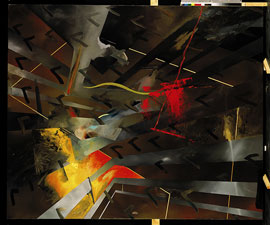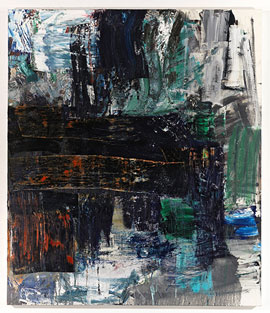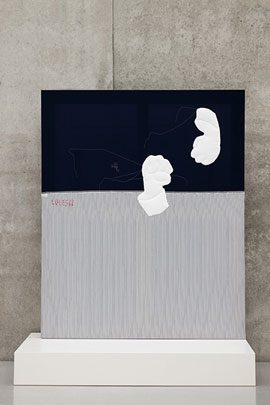Posts Tagged: winter 2012

Shaping the Glass
By Katy Siegel
Life is not an idea, but ideas are part of life. Thinking is the only way out of our enmities and miseries. Vision—seeing better and more freshly, with less habit and personal bias—awakens us to life.

Shaping the Glass
By Katy Siegel
Life is not an idea, but ideas are part of life. Thinking is the only way out of our enmities and miseries. Vision—seeing better and more freshly, with less habit and personal bias—awakens us to life.

Richter’s Willkür
By Christine Mehring
Following on the heels of his signature photorealist blurs, Gerhard Richter’s abstract paintings have long exemplified a “permanent break in style as principle of style,” as Klaus Honnef noted in the artist’s first retrospective catalogue in 1969.

Richter’s Willkür
By Christine Mehring
Following on the heels of his signature photorealist blurs, Gerhard Richter’s abstract paintings have long exemplified a “permanent break in style as principle of style,” as Klaus Honnef noted in the artist’s first retrospective catalogue in 1969.

Zero at the Bone: Louise Fishman Speaks with Carrie Moyer
By Louise Fishman and Carrie Moyer
This all came to me in the last couple of weeks. In the late 1980s, early 1990s, my partner and I had gone to Madrid to see the big Velázquez retrospective. I’d never been to the Prado. I spent a lot of time looking at the Velázquez and wandering around the museum. Eventually I found Goya’s Black Paintings.

Zero at the Bone: Louise Fishman Speaks with Carrie Moyer
By Louise Fishman and Carrie Moyer
This all came to me in the last couple of weeks. In the late 1980s, early 1990s, my partner and I had gone to Madrid to see the big Velázquez retrospective. I’d never been to the Prado. I spent a lot of time looking at the Velázquez and wandering around the museum. Eventually I found Goya’s Black Paintings.

The Terms of Craft and Other Means of Making: Lee Bontecou’s Hybrid Trajectory
By Elyse Speaks
In 1958 Lee Bontecou began experimenting with a technique for making sculpture based on binding fabric to thin steel frames or armatures. Executed first on a small scale that oscillated between the form of the model and the form of tabletop sculpture, the works were emphatic in their distance from the shape and tenor of the dominant field of welded metal sculpture.

The Terms of Craft and Other Means of Making: Lee Bontecou’s Hybrid Trajectory
By Elyse Speaks
In 1958 Lee Bontecou began experimenting with a technique for making sculpture based on binding fabric to thin steel frames or armatures. Executed first on a small scale that oscillated between the form of the model and the form of tabletop sculpture, the works were emphatic in their distance from the shape and tenor of the dominant field of welded metal sculpture.

Shame: The One That Got Away
By Josephine Halvorson
The nineteenth-century painter Samuel Palmer lived within two hundred yards of the cemetery, making drawings, notes, and paintings in what he called the Valley of Visions in an effort to “bring up a mystic glimmer.” Sinclair, London Orbital Acid rain has eroded the words. Lichens, like Van Gogh blooms in orange and yellow, cling to the mauve stone.

Shame: The One That Got Away
By Josephine Halvorson
The nineteenth-century painter Samuel Palmer lived within two hundred yards of the cemetery, making drawings, notes, and paintings in what he called the Valley of Visions in an effort to “bring up a mystic glimmer.” Sinclair, London Orbital Acid rain has eroded the words. Lichens, like Van Gogh blooms in orange and yellow, cling to the mauve stone.

Ground Control: Painting in the Work of Cosima von Bonin
By Gregory H. Williams
During the past decade a steady flow of critical writing on contemporary painting has appeared, much of it seeking to define changes to the practice that have taken place since 1990. In several often-cited essays, a shared theme has emerged in which late-twentieth-century painting is described as undergoing a crisis of containment.

Ground Control: Painting in the Work of Cosima von Bonin
By Gregory H. Williams
During the past decade a steady flow of critical writing on contemporary painting has appeared, much of it seeking to define changes to the practice that have taken place since 1990. In several often-cited essays, a shared theme has emerged in which late-twentieth-century painting is described as undergoing a crisis of containment.

